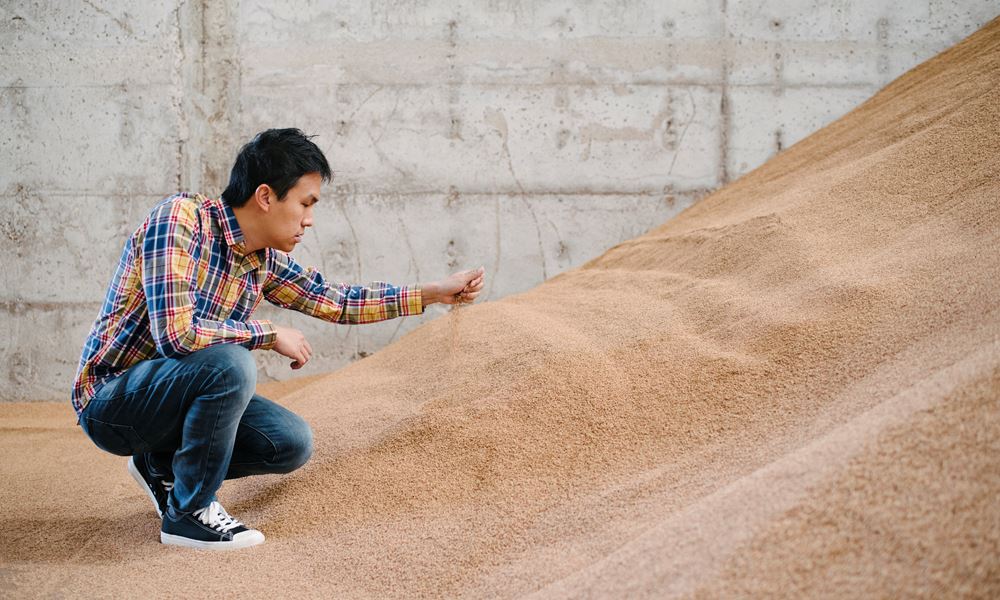The acoustic performance and esthetics of cork have captivated designer Gabriel Tan. When he was looking for a disruptive and high-performance material to design acoustic and decorative panels for two projects in Singapore, cork came up as the ideal solution. A total of 40 pieces were made for two interior projects.
How and when did you get the idea to use this raw material (cork) to create these acoustic and decorative panels?
When I visited the Convent of the Capuchos in Sintra in 2014, I was amazed by the use of cork throughout the interior. I knew then that this material was very special, and when I visited Amorim (also in 2014) to learn about the cork manufacturing process, I left Portugal with a strong desire to use this material for my design projects. The idea of the acoustic panels came about when I was designing the interior of the Duo Residence Show Suite at the end of 2015. I wanted to use an acoustic material that was not commonly seen in interiors, and cork came to mind. I designed it and contacted Amorim with my drawings, and after a year of further development and prototyping, we finally implemented the panels in early 2017 for two interior projects in Singapore.
Cork is a natural, 100 percent recyclable and environmentally friendly product. Were these characteristics important for your decision? Is sustainability a factor that you value when you choose a raw material?
Yes, of course, sustainability was one aspect of cork that attracted me to the material.
Cork is not only sustainable in its production but since it is a relatively lightweight material, it requires much less energy to transport and install. The fact that there is almost zero waste in the cork manufacturing process was also a major reason for using this material.
“It has such a rich texture that you can almost feel it in your mind when you look at it.”
Gabriel Tan
If you had to highlight two main advantages of cork, what would they be?
I would say its tactile visual quality (it has such a rich texture that you can almost feel it in your mind when you look at it), as well as its acoustic properties.
Tell us a bit about the inspiration behind these projects.
For the Venture Craft office project, the idea was to create acoustic artwork using three-dimensional cork panels in combination with upholstery. Wall art is such an essential part of office design these days, but so is acoustics. It seemed to be a very natural step to combine the two.
For the Duo Residence Show Suite, I wanted to apply the panels in a way that would create very different visual effects in the two bedrooms. In the master bedroom, we selected the burned cork finish and tiled it horizontally along the lower half of the wall, while in the guest bedroom, we staggered the light cork panels vertically to create a dynamic wall feature.
Were the visuals of the different cork types important for these two projects?
Yes, I think the two different cork types created a different atmosphere in each application.
"People have been reacting with huge surprise at the application of cork for both projects."
Singapore, we almost never see cork used in such a three-dimensional way; it often comes in flat sheets.
"People have been reacting with huge surprise at the application of cork for both projects."
Singapore, we almost never see cork used in such a three-dimensional way; it often comes in flat sheets.
What feedback are you getting from this collection? How do people react to this creation?
People have been reacting with huge surprise at the application of cork for both projects. In Singapore, we almost never see cork used in such a three-dimensional way; it often comes in flat sheets. Hence, I would say these projects have repositioned the value of cork in the minds of the people who have seen it.
How do you rate the support from the Amorim Cork Composites team throughout the process?
I would say it has been extremely smooth working with the Amorim Cork Composites team throughout the development process, everyone has been super professional, patient and responsive to my queries. I am very appreciative of the support I have received, which ultimately contributed to the success of the project.
About Gabriel Tan Studio
Gabriel Tan Studio is a design practice working across the borders of craft, culture and technology. Exploring new ways to interpret luxury and break archetypes, the studio works on design, curation and creative direction for international clients, including Ariake, Design Within Reach, The Conran Shop, Ishinomaki Lab and The Warehouse Hotel.
Gabriel Tan’s works have been exhibited in Milan, New York, Stockholm, London, Paris, Tokyo, Barcelona and Singapore, and he has won the Industrial Designers Society of America's IDEA Award, Electrolux Design Lab Award and the Bombay Sapphire Asia Grand Prix. In addition to his design work, he has taught as a visiting lecturer at Lasalle College of the Arts and the University of Oregon and also served as a member of the jury at the Cannes Lions Festival.
Gabriel is also one of the co-founders of the international design collective Outofstock, whose clients include Ligne Roset, Industry Plus and Blå Station.
Would you like to know more about this subject?
Let us know your details and we'll get back to you.
